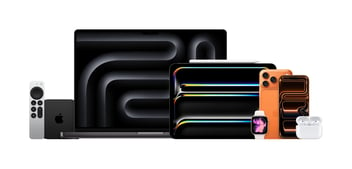Shop till you drop: A deep dive into loyalty in the retail space
What’s better than shopping at all your favourite retailers for all the pieces you love most? Being rewarded for it.
In this article, we’ll explore customer relationships with retail shopping and the impact loyalty can have on buying behaviour.
.jpg?width=736&height=414&name=Website%20(1).jpg)
Retail therapy. A term used to describe the positive and therapeutic nature of shopping and its powerful ability to impact a shopper’s wellbeing and lift moods. Research has shown us numerous ways in which this happens. For example, searching for and finding items you like can create an emotional boost, resulting in brain-fuelled happiness.
From online to instore, in 2024 there are endless ways people can shop. There is also a range of buying behaviours that inform how people shop.
For example:
- Habitual shoppers: shoppers who often put little thought or research into their purchases but rely on habit, often through familiarity or previous purchases, when making such decisions.
- Impulsive shoppers: shoppers are likely to spend less time on prior research but may buy a product due to emotional appeal, social influence or the feeling of getting a good deal. Then you also have
- Frugal spending shoppers: shoppers who focus on saving money and spending within their budgets.
As a brand with unique expertise in the loyalty space, the question that comes to mind immediately is how can we use this insight to better our offerings?
The impact of loyalty on shopping decisions
When we uncover interesting trends or insights, we look at them through the lens of loyalty. One of the main aims of loyalty programmes is the building of strong emotional bonds between consumers and brands, encouraging purchase and therefore retention.
Research from Adobe found that 7 in 10 shoppers consider themselves brand loyal after at least three purchases from the same brand. This is important. If your consumers consider themselves ‘brand loyal,’ then they already have an element of trust and affinity for your brand. This is only further reinforced through being a part of your loyalty programme.
A loyalty programme can also have a significant impact on customer happiness and an overall increase in revenue. A study by McKinsey, for example, found that customers who are members of loyalty programmes are 59% more likely to choose a brand over a competitor – and 43% more likely to buy weekly. The question is, however, why is this the case?
We’ve identified a few psychological reasons. For example, positive reinforcement encourages repeat purchases. Members begin to associate their spending with receiving rewards as they understand how their actions are linked to the benefits they receive. Worthwhile rewards motivate members to earn, as they anticipate the goal attached to redeeming their loyalty points. Also, the exclusive nature of loyalty programmes means they have the power to excite members to be a part of a special and select group.
The crucial part
Customer acquisition data from Invesp states that existing customers are also 50 percent more likely to try your new product. Investing in loyalty and rewards programmes is therefore more often than not a valuable growth technique. If we partner the above research around loyalty positively impacting shoppers on a psychological/emotional level, with what we know about the positive psychological benefits of shopping, then we may be able to advise brands on how they can better appeal to their customers and enhance loyalty efforts.
Thinking back to the chemical processes that occur in the purchase process. Many assume that dopamine is released when the brain receives a reward, but dopamine is actually released in anticipation of a reward. So, it’s not just about receiving the reward but in fact the moments leading up to this. If your brand can create that sense of excitement – both when consumers wait for your product/service, but also as they anticipate rewards from these purchases – then you put your business in an excellent position. It relates well to the idea of emotional loyalty, which we explored in a previous article (The Customer’s Voice). Creating excitement and anticipation for customers will only brew further positive feelings, making customers feel more connected with your brand as positive associations with your brand subconsciously begin forming.
The time your members spend waiting, whether that be the actual product or reward they’ll later be able to redeem, is crucial. Being able to have both, if they’re members of your loyalty programme too, means a double reward, and even more incentive to keep the cycle going.
The Wine Business
Whilst our expertise lies in the travel space, there are other significant products our customers may come into contact with on the journey of travel. One of these is wine. Whether in a restaurant in a city thousands of miles away, on a vineyard or onboard a British Airways flight, wine has the power to evoke an abundance of memories and its provenance is often important to those drinking it. From years of experience serving wine on British Airways aircrafts, we curated a broad selection of wines, beer, spirits and non-alcoholic drinks. As a brand, we then considered what more we could do with this selection we’d created. This is where The Wine Flyer was born.
The business was created in 2021 with the aim to engage customers more regularly, giving members the opportunity to order their favourite wine and redeem Avios on smaller more frequent spends. And of course, to enjoy the selection we had to offer, even when they aren’t travelling. When we think about The Wine Flyer, in relation to shopping habits, we can see why a service like this could appeal to different groups of shoppers. For example, for habitual shoppers who put little thought into purchases and often buy as a result of familiarity, this service works perfectly due to its ease of use through regular deliveries. It also works well for frugal shoppers, focused on saving and spending less, as the opportunity to earn and redeem points from each purchase helps to assure shoppers of its value for money.
The Wine Flyer proved successful in many ways. In year one, the average Avios redeemed per order was over 20,000. Not only did members save on 50% of purchases with the inclusion of Avios, but in the first 12 months of the offering, we had already served 50,000 orders, with considerably high levels of repeat customers and market leading levels of customer satisfaction.
Earlier in the article we mentioned that dopamine is released in a person in anticipation of receiving a reward. The Wine Flyer service is able to capitalise on this. In the time between members placing an order and receiving that order, they’re able to build up excitement which in turn can create a positive association between them and the brand, and is reignited every time they order. In addition to this, you have the excitement of seeing your points balance grow and grow, until you have enough to redeem those points whether that be on a dream holiday or another of our offerings. This double hit of dopamine is what sets this type of service apart, making The Wine Flyer all the more valuable for our customers.*
This learning gives us an opportunity to think about how we can design rewards and benefits, in line with what we know about the psychology of shopping and loyalty programmes, helping us to further improve our offering for our members.
* Whilst The Wine Flyer is committed to providing world-class wines from our favourite destinations, they are also committed to maximising the awareness of responsible alcohol consumption. Learn more here.
The psychological impact of shopping
From an understanding of buying behaviours, to the psychological factors at play, we can conclude that shopping is a lot more complex than what we see on the surface.
We can identify that there’s a sweet spot between the dopamine produced while shopping + the positive psychological impact from getting rewards and this is something that brands can use to their advantage to create satisfaction for members, and also to elevate their loyalty programmes in a number of ways.
Making the anticipatory period more exciting, designing rewards worth waiting for, positive reinforcement so that members consider themselves ‘brand loyal’ and feel like they’re part of something, are just a few ways. As brands begin to do this, to understand more and more, and to refine loyalty efforts accordingly, we expect to see some exciting improvements in the loyalty space in the coming years.
For more information on how to elevate your loyalty offering read our previous article here. If you’d like to speak to us directly, please do not hesitate to contact us here today.
related
articles

- Customers can now supercharge their shopping with savings on Apple’s newest products such as the...

Loyalty and partnerships go hand in hand. The right partnerships can elevate your brand as well as...

Today, there is an abundance of psychological data available that attempts to explain human...






